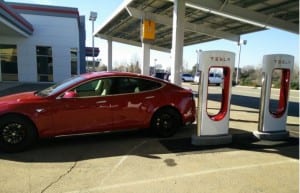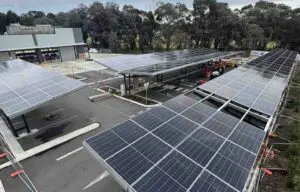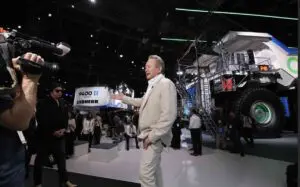As interest in electric buses in Australia grows – despite the best efforts of the federal government to act like an Emu and bury its head in the sand – it’s worth looking at what is happening overseas, and China in particular.
The EV video website “Fully Charged” has recently produced this episode. Fully Charged: Electric buses in Shenzen. And despite the less than fully professional presentation, the access granted was so good that inevitably some useful information slipped through the cracks.
The first thing that struck me was the use of English in the wall-length computer dashboard.
So for facts and figures there are, for instance, 16,000 electric buses in Shenzen and the franchise the reporter visited had 6,000, of which 5,938 were in operation at that point in time with 181 depots and 2,000 chargers.
Those 6,000 buses do a total of more than 1 million kilometres per day or, say, 180km each. Buses are recharged from 50% capacity using 150KWh chargers.
The bus has a 250-330KWh battery and the recharging depots are integrated to provide restaurants, etc, while the bus recharges.
The depot’s network essentially had to be rebuilt from scratch to optimise for electric. Daily energy consumption by the bus network appears to be .95GWh You can also get that number by using 93kWh/100 km and 1 million km a day, for the fleet. 93KWh/100km compares with, say, 15-19 for electric cars.
For this fleet, alone, that’s 0.35TWh per year. I believe the terrain in Shenzen to reasonably flat and I read a couple of years back that BYD buses had struggled in San Francisco.

For this franchise it was basically a 10-year program to move to fully electric buses and taxis.
Taxi depots were organised similarly. Taxis in this franchise do a cumulative 0.5 million kilometres per day.
So working off, say, 19kWh per 100km, that’s another 35GWh per year. On these numbers, electric vehicles in Shenzen appear already to be consuming a meaningful share of total electricity in China.
Electric vehicles increase thermal energy consumption in China today
I dislike visiting this old and essentially misleading chestnut, but so long as China has 70% of its power coming from thermal generation, then for that long electrification of transport and industrial processes will increase thermal electricity consumption.
Of course as we, the citizens of the world, decarbonise electricity supply, so it is that electric vehicles make a net positive contribution.
The point is, the two have to go hand in hand. And that brings us to:
China’s electricity consumption is growing
So is coal consumption. Wind and solar are growing quickly but are still at less than half the level as a share of total supply. The numbers below are calendar years.

You can slice and dice these numbers in a few ways.
If you want to be an optimist I suppose you could say that of the increase in electricity production between 2015 and 2020 only 2/3 is from thermal.
However at 1525TWh, the increase alone is equal to, say, 7.5X Australian total consumption from all sources and so it’s a lot of coal, arguably more than China can produce from its own resources.
Shenzen electric transport is already at around 1TWh per year
Shenzen has electrified its public transport. The next step will be to electrify other government-owned transport (garbage services, police, construction machinery and so on). In the process, it’s increased regional electricity consumption by about 1TWh per year, modest in the bigger scheme of things.
Shenzen sets a fine example for Australia
In a capitalist, market-based economy, government policy shouldn’t matter so much. The fact is that Australia has excellent opportunities in electric vehicles; opportunities to increase energy security by reducing oil dependency,
opportunities to develop 21st century industries like battery and car technology, opportunities to reduce carbon emissions, opportunities to create a better lifestyle for Australians, opportunities to shift from one form of resource extraction, coal, to another, lithium, and to enhance our world position in rare earths, copper, aluminium and nickel.
The Shenzen example shows that strong public commitment is required to manage transition of bus and taxi fleets. The system needs to be planned, depots reconfigured, shifts reorganised, and a comprehensive charging network established with an eye to future technology.
In regard to all of this, Australia’s federal government leadership is completely lacking. “Have a go” seems to belong to another era.
Federal cabinet is comprised of people with good academic credentials, including Angus Taylor, but their ability seems to be used for anything but the good of Australia’s people, present and future. That only serves to reinforce the increasing cynicism people have towards leaders who waste their own and everyone else’s time.
Burying your head in the sand is an Australian metaphor. Rarely has it seemed more apt.











